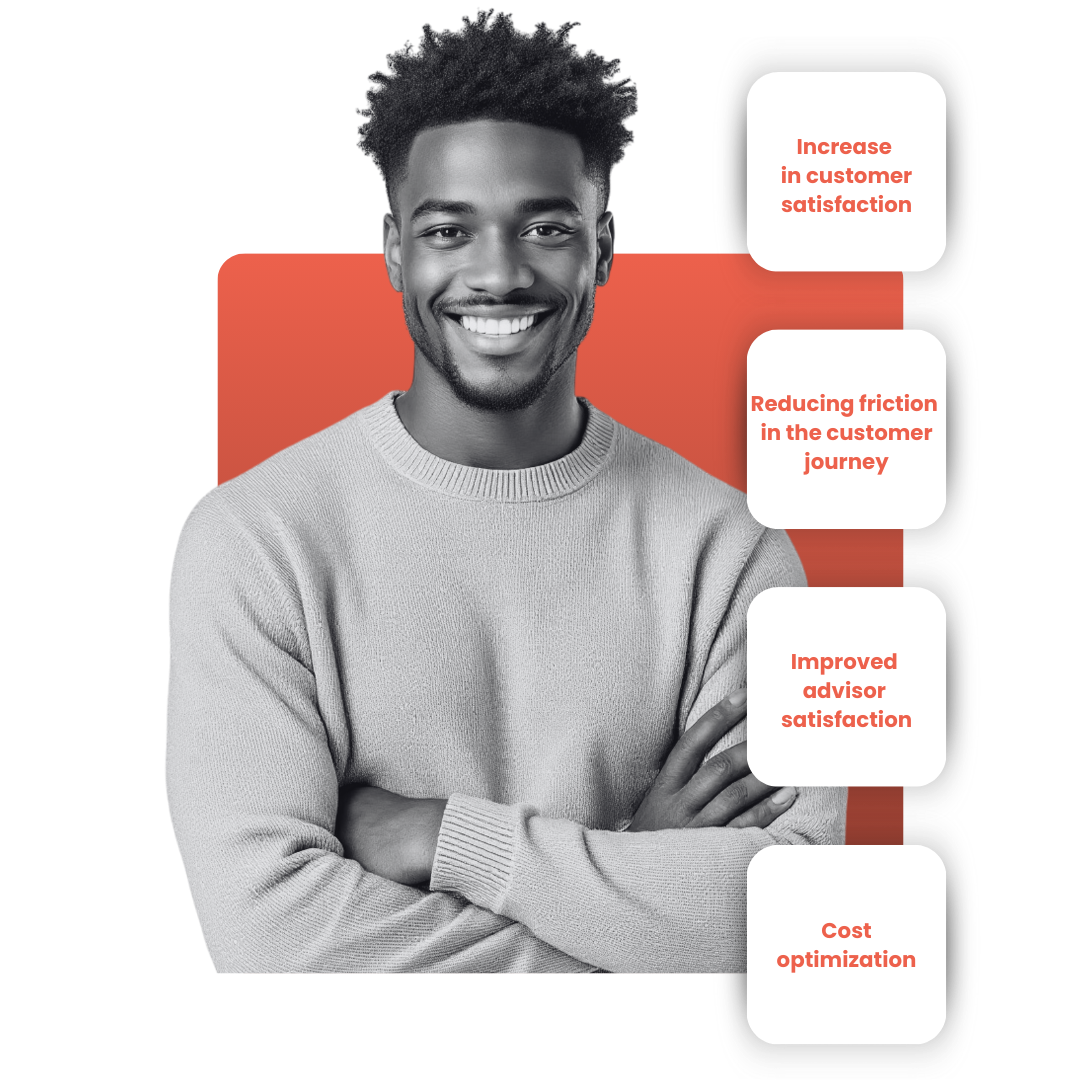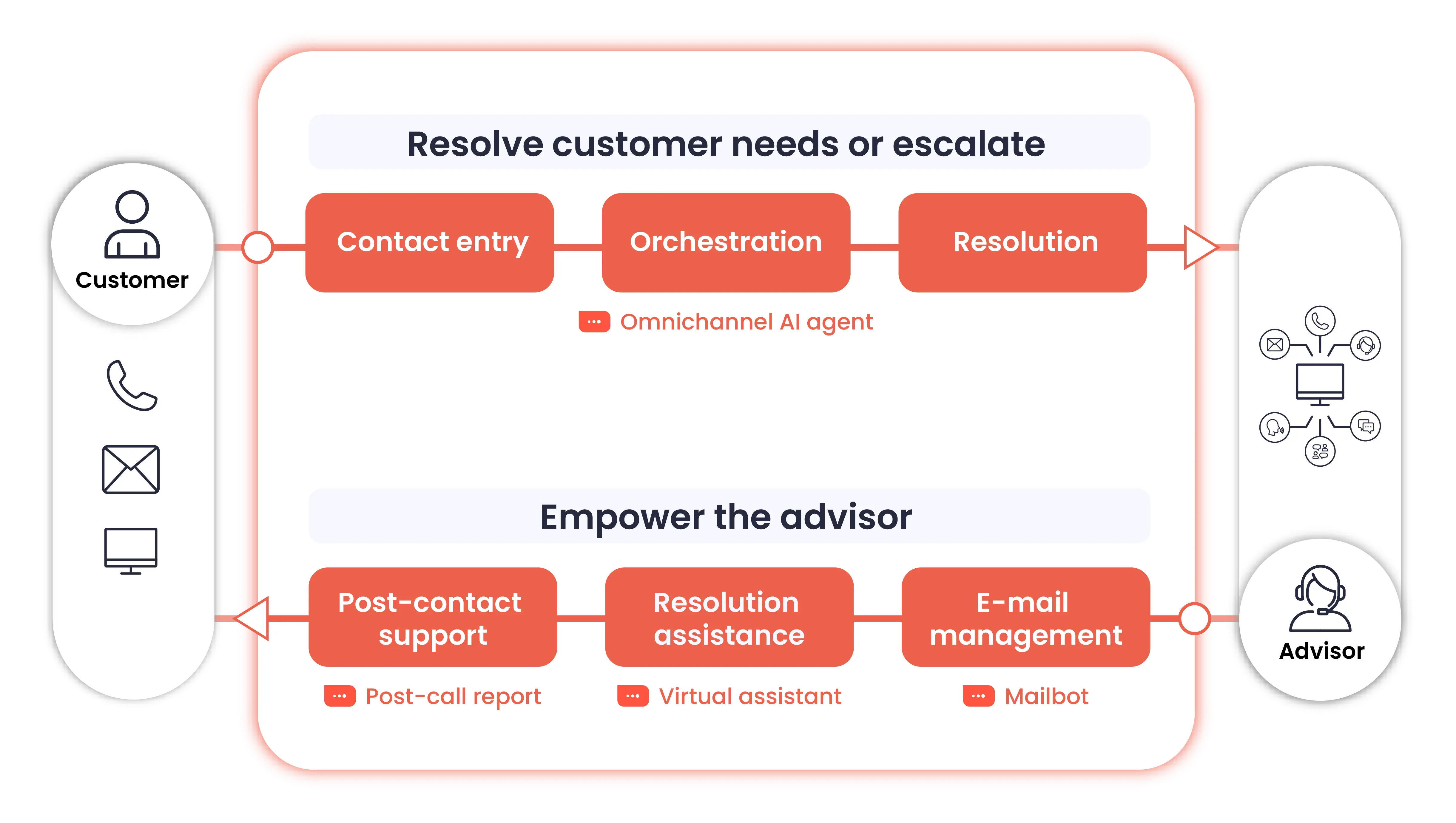Omnichannel orchestration is now a key component of high-performing customer service strategies. With customer journeys increasingly fragmented across physical, phone, and digital touchpoints, businesses must ensure continuity, fluidity, and consistency at every interaction. This guide provides you with the essential insights to understand the challenges and effectively structure and optimize your omnichannel approach.

Omnichannel orchestration is the ability for a company to connect and synchronize all its communication channels in real time: website, mobile app, email, phone, social media, physical stores, and more. Unlike multichannel strategies, where each channel operates independently, omnichannel orchestration aims to interconnect them to ensure a smooth and continuous customer journey.
The customer can start an interaction on one channel and continue it on another without having to repeat their information, the context is seamlessly transferred. For example, they might ask a question via a chatbot on the website; the orchestrator detects an urgent request and routes it to an advisor who calls them back, already aware of the interaction history. This personalized support relies on real-time data synchronization across different systems (CRM, contact center, engagement platforms...) and close collaboration between marketing, customer service, and sales teams.
This orchestration is often powered by an AI-driven conversational agent capable of detecting the intent behind each customer interaction. Depending on the nature of the request and the company’s routing rules (agent availability, business hours, priority level...), the agent can either deliver an automated response or transfer the conversation to a human advisor (via phone or live chat), while maintaining the full interaction history to ensure a smooth handover.
These three approaches are often confused, but they reflect very different levels of integration:
Multichannel involves using several communication channels (website, social media, phone, physical stores, print catalogs...), but in a disconnected manner. Each channel is managed independently and does not share information with the others. As a result, customers often have to repeat their information when switching channels, leading to a fragmented experience and potential frustration.
Cross-channel takes it a step further by linking channels together to streamline the customer journey. For example, a customer might start a purchase online, choose in-store pickup, and then contact customer service by phone. Information flows between channels, ensuring some level of continuity. This approach often relies on tools like CRMs, contact centers, or order management systems.
Omnichannel takes this logic to the highest level: all channels are synchronized in real time and share a single, unified customer history. The customer can switch from one channel to another without ever losing the thread of the interaction. For example, a customer starts with a phone call to report an issue. They are directed to an interactive voice response system (IVR) that collects initial information and identifies the reason for contact. Depending on the complexity of the request, the interaction is then routed to an AI-powered conversational agent, and if needed, escalated to a live chat with a human advisor, who instantly has access to the entire history gathered by the IVR and the chatbot.
This level of synchronization relies on interconnected systems and strong collaboration between teams to ensure a seamless, personalized, and consistent experience.
Learn more about these differences in our article: Multichannel, cross-channel, and omnichannel: what’s the difference?
A well-designed omnichannel strategy creates value on multiple levels:

71% of customers expect companies to collaborate internally to avoid making them repeat themselves. Achieving this level of seamless experience requires a gradual approach to omnichannel strategy. It begins with a thorough analysis of existing touchpoints to identify the strengths and pain points of the current customer journey. Then, customer data must be centralized in a single source of truth (often a CRM), accessible to all relevant teams: marketing, sales, and customer service.
It’s also essential to rely on robust technological tools such as CRMs, omnichannel orchestration platforms like DialOnce, and marketing automation solutions that can synchronize data in real time while ensuring data privacy and security. Beyond technology, omnichannel success also requires internal transformation: fostering a customer-centric culture, breaking down silos between departments, and embedding continuous improvement into the organization’s mindset.
Discover how Vattenfall implemented an omnichannel orchestration platform to manage its entire customer journey. By directing each contact to the most relevant resolution path (website, phone, email), the platform centralizes intent and promotes first-contact resolution, all while simplifying the overall customer experience.
To be effective, an omnichannel strategy relies on five essential pillars, combining technology and organizational alignment:

Implementing an omnichannel customer relationship strategy is not something that can be improvised. It requires a structured set of steps to ensure a smooth, consistent, and effective transition to this new approach:
Artificial intelligence (AI) now plays a strategic role in optimizing omnichannel orchestration. It enables, in particular:
These capabilities not only help better meet customer expectations, but also relieve human teams and reduce operational costs. AI thus becomes a true copilot for customer relationship management.
To fully leverage these possibilities, a real organizational shift is required. AI strengthens the work of human teams by taking over simple, repetitive tasks, allowing them to focus on more complex and strategic issues. This means rethinking workflow design, automating standard actions, and ensuring a smooth handoff between automation and human intervention, in order to provide customers with a consistent, fast, and personalized experience tailored to every situation.

This transformation must be designed in alignment with the operational realities of your teams: Which tasks can be handled by AI ?Which interactions should remain human?
How can information flow seamlessly between both? Well-designed orchestration helps balance responsiveness, efficiency, and personalization, while preserving the essential role of human agents in high-value interactions.
To go further, download our white paper on Customer Excellence and Omnichannel Orchestration, 2025 Edition, co-authored with BearingPoint.
Banks and insurance companies are facing growing and increasingly diverse volumes of customer requests, from advice and claims to contract management and urgent incident handling. These requests come through various channels (phone, branches, email, mobile apps) and require fast, consistent responses.
Omnichannel orchestration helps standardize access to customer information, streamline transitions between channels, and better allocate advisors to handle complex queries. Here are two real-world use cases:
In the energy sector, providers often face spikes in customer contact volumes, typically driven by billing cycles, contract activations, or subscription change requests. Omnichannel orchestration helps distribute these demands more efficiently by offering tailored digital solutions for simple queries and involving human agents only when their expertise is truly needed.
In the retail sector, the challenge is to deliver a seamless customer experience across e-commerce platforms, physical stores, and customer service channels. Omnichannel orchestration centralizes customer history, automates recurring requests, and ensures human intervention only when truly needed.
Tracking the right KPIs is essential to evaluate the performance of an omnichannel strategy. It’s not just about collecting data, it’s about turning insights into concrete actions to continuously improve the customer experience.
Cross-analyzing these indicators tailored to customer profiles and various contact reasons becomes a powerful driver of continuous improvement. The goal is to simplify journeys, reduce friction points, and optimize resource allocation to deliver a smooth and high-performing customer experience.
Omnichannel orchestration has become essential for companies aiming to deliver a simple, seamless, and efficient customer experience. By connecting channels, leveraging data and artificial intelligence, and aligning teams around shared goals, businesses enhance their ability to understand customer expectations, respond quickly, and provide tailored solutions. Omnichannel strategy thus becomes a true driver of long-term performance and a key differentiator in meeting the needs of increasingly demanding customers.